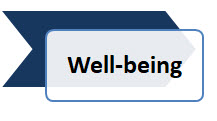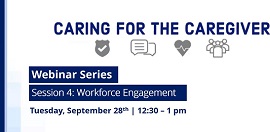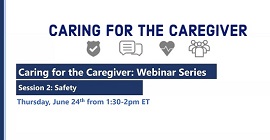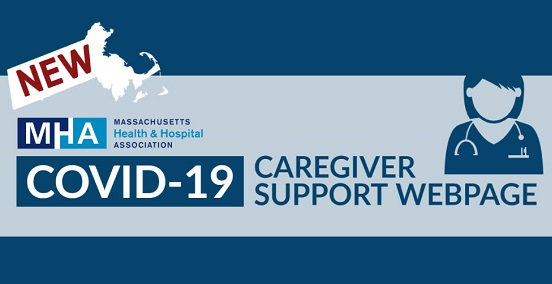
Each day across Massachusetts, individuals and families entrust their lives to the men and women who have dedicated their working lives to the caring professions. We owe each one of them gratitude for the difficult work they do on our behalf, and we must ensure their safety and promote their wellbeing as they fulfill their caring mission.
Nearly all of us have spent anxiety-filled moments when our health or the health of our loved ones has been imperiled. Many of us can recall the comfort and care we received in those difficult times. What we often fail to measure, however, is the profound stress borne by those caring for us. RNs and other healthcare professionals, no matter how steeled against the daily stresses of their job, nonetheless bear the burdens of care, of comforting the afflicted, and of coping with sorrow when a patient under their care succumbs to illness.
The caregiving professions are profoundly difficult jobs, taking an emotional and spiritual toll on the healthcare workforce. And hospital jobs are dangerous as well, as nurses and others face environmental risks, violent attacks from the public, and even, unfortunately, harm from workplace cultures where supportive encouragement can be replaced by demeaning behavior.
MHA and its members are committed to ensuring the healthcare workforce is recognized for its efforts and that the safety and wellbeing of our employees is protected.
The Caring for the Caregiver initiative focuses on three core pillars:
- Employee Recognition & Gratitude
- Workplace Safety
- Employee Wellbeing
Mission Statement:
Acknowledge the valued contributions of hospital staff and support them with resources to enhance the safety of their work environment and wellbeing.
Creating a Caring Environment at Your Hospital
Throughout the Massachusetts hospital community, efforts are underway – in various stages – to create programs to advance the three core pillars of the Caring for the Caregiver initiative. Through this website, MHA is assisting its members by providing resources, step-by-step guides, and best-practice examples now underway.
No matter what stage you are at in administering an employee program, the following resources are essential tools to assist you:
1. Wellness Council of America’s “7 Benchmarks of Success” provides a good general overview of best practices for workplace wellness programming. The seven steps are:
- Capturing Senior Level Support
- Creating a Cohesive Wellness Team
- Collecting Data to Drive a Results-Oriented Wellness Initiative
- Crafting an Annual Operating Plan
- Choosing Appropriate Health Promotion Interventions
- Creating a Supportive, Health-Promoting Environment
- Carefully Evaluating Outcomes
Further information about WELCOA’s “7 Benchmarks” is available here.
2. The Center for the Promotion of Health in the New England Workplace (CPH-NEW) is a national Center for Excellence in Total Worker Health®, conducting research and education to advance worker health, safety, and well-being. Total Worker Health® (TWH) is a holistic, integrated way of looking at employee health, safety, and well-being in the workplace. This concept was first introduced by the federal Centers for Disease Control and Prevention. A workplace that uses a TWH approach looks for ways to combine traditional occupational safety and health protection with prevention efforts to advance overall worker well-being. The TWH toolkit has a number of training resources and job aides to assist with implementation.
3. This HERO Scorecard is designed to help organizations learn about best practices for promoting workplace health and well-being, and to discover opportunities to improve and measure progress over time. The HERO Scorecard is used as a bench marking tool for wellness programming. When employers submit their responses to the online system, they immediately receive a return e-mail containing a free report that includes an overall score and a score for each of the six sections compared to national average scores. The sections represent the foundational components that support exemplary health and wellbeing programs. This guide can help you in using the HERO Scorecard.
Armed with these essential resources, you can begin to address the three core pillars, applying the WELCOA Seven Benchmarks to each area and measuring your success using the HERO Scorecard.

Employee Recognition & Gratitude
The quantifiable elements involved in helping hospitals support their workforce’s wellbeing involves policies and programs, best practices, learnings from focus groups, shared data, educational programs, and more. But the less concrete, yet even more valuable element, involves creating a work environment of mutual respect to allow workers to find joy and fulfillment in the honorable work they do.
Regularly recognizing the efforts of our nurses and the whole hospital care team is both appropriate and necessary to create positive work environments that will translate into high-quality patient care.

Healthecare Safety
Massachusetts hospitals serve communities by providing medically necessary care 24 hours a day, seven days a week. To meet their mission, hospitals are open and accessible to all members of the public. As such, staff, patients, and family members of patients may unfortunately be subject to incidences of violence within the hospital setting despite hospitals' best efforts.
Massachusetts hospitals have been, and remain committed to, working with their staff and patients to review internal systems, develop policies and programs to prevent violence in healthcare, and respond to each and every incident.
In Massachusetts, the state’s Executive Office of Health and Human Services and the Executive Office of Labor and Workforce Development have issued guidance and information for entities like hospitals to develop healthcare violence prevention and crisis response plans. The main accrediting agency for hospitals – the Joint Commission – recognizes the need for facilities to protect against healthcare violence; it has issued guidance and standards that hospitals have used to update existing practices. In addition, federal agencies such as the Centers for Disease Control and Prevention’s National Institute for Occupational Safety and Health and the U.S. Occupational Safety and Health Administration have issued guidance and information that hospitals and other providers review regularly.
As new challenges and safety concerns arise, hospitals continually adapt to protect patients and the healthcare workforce.

Employee Well-being
Empowering workers and supporting their emotional, physical, social, intellectual, spiritual and even financial health are necessary steps to allow the healthcare workforce perform their mission to the best of their abilities. The following resources can assist healthcare facilities care for the caregiver, which will, in turn, strengthen patient care.

Caring for the Caregiver: Workforce Engagement
Recorded webinar available here… ...» Full Article
Caring for the Caregiver: Webinar Series, Safety – Session 2
Recorded webinar available here... ...» Full Article
Caring for the Caregiver Well-being COVID-19 Resources
Resources/Topics include: Webinars Articles, Toolkits, and Digital Resources Stress Management Caregiver Support Read more... ...» Full Article
